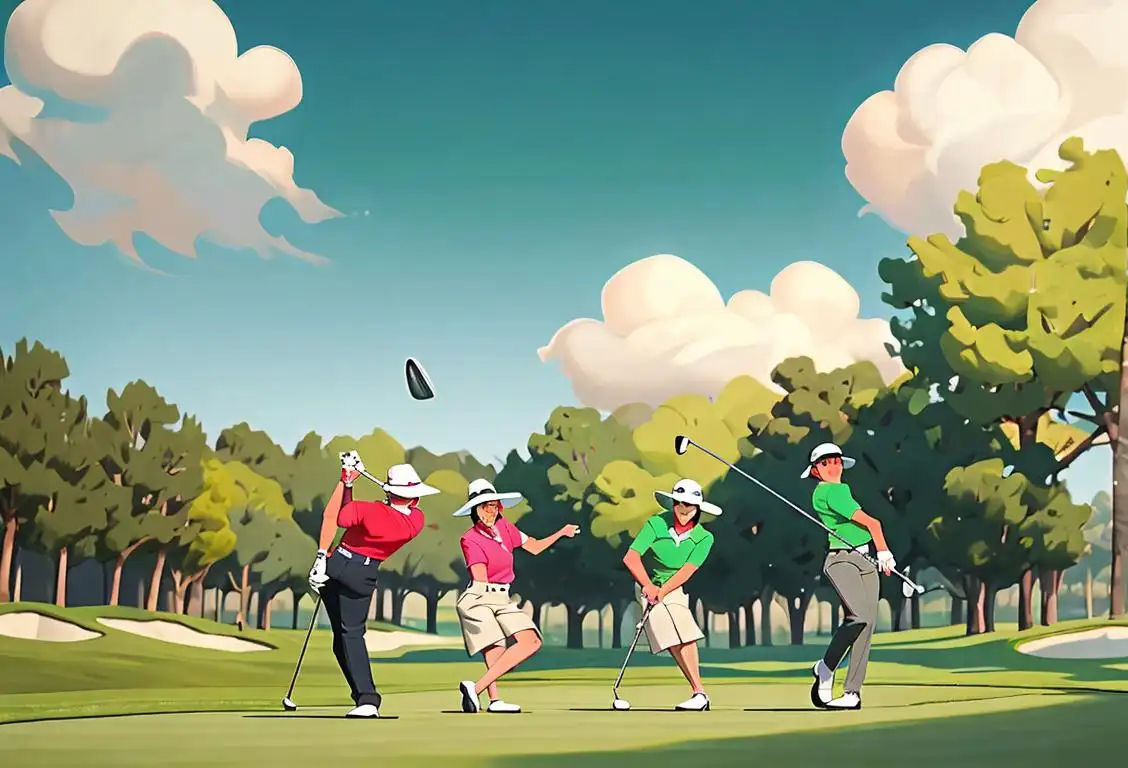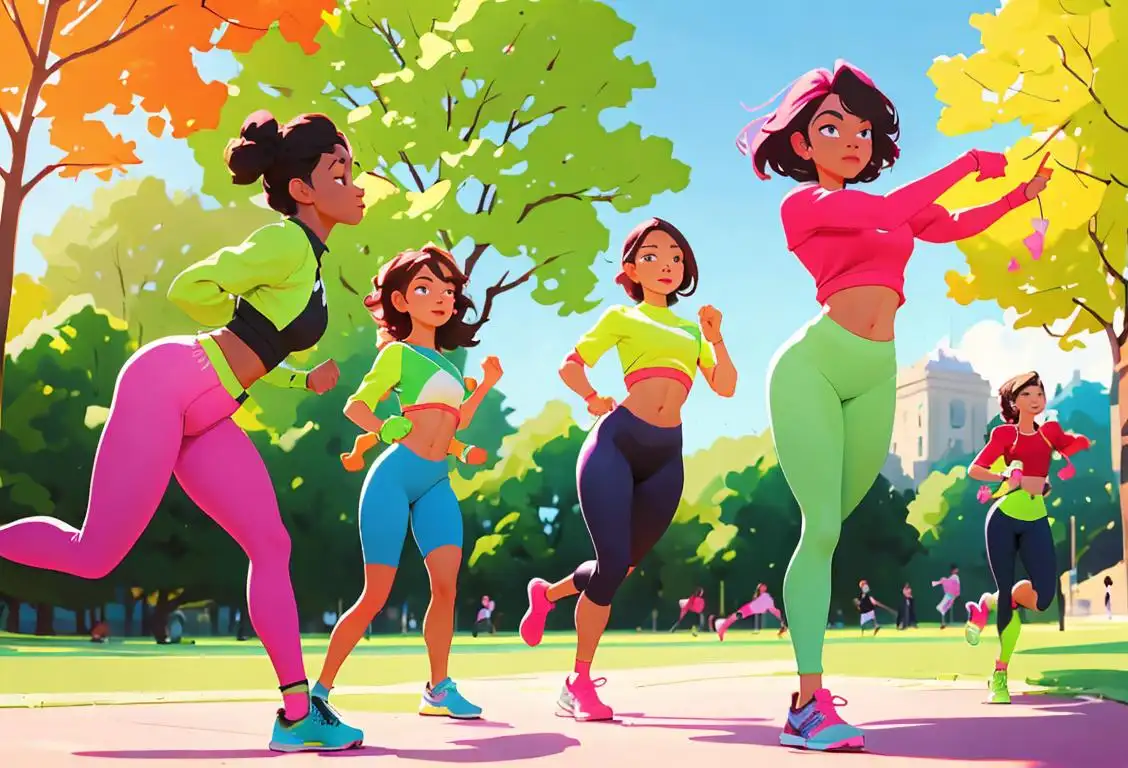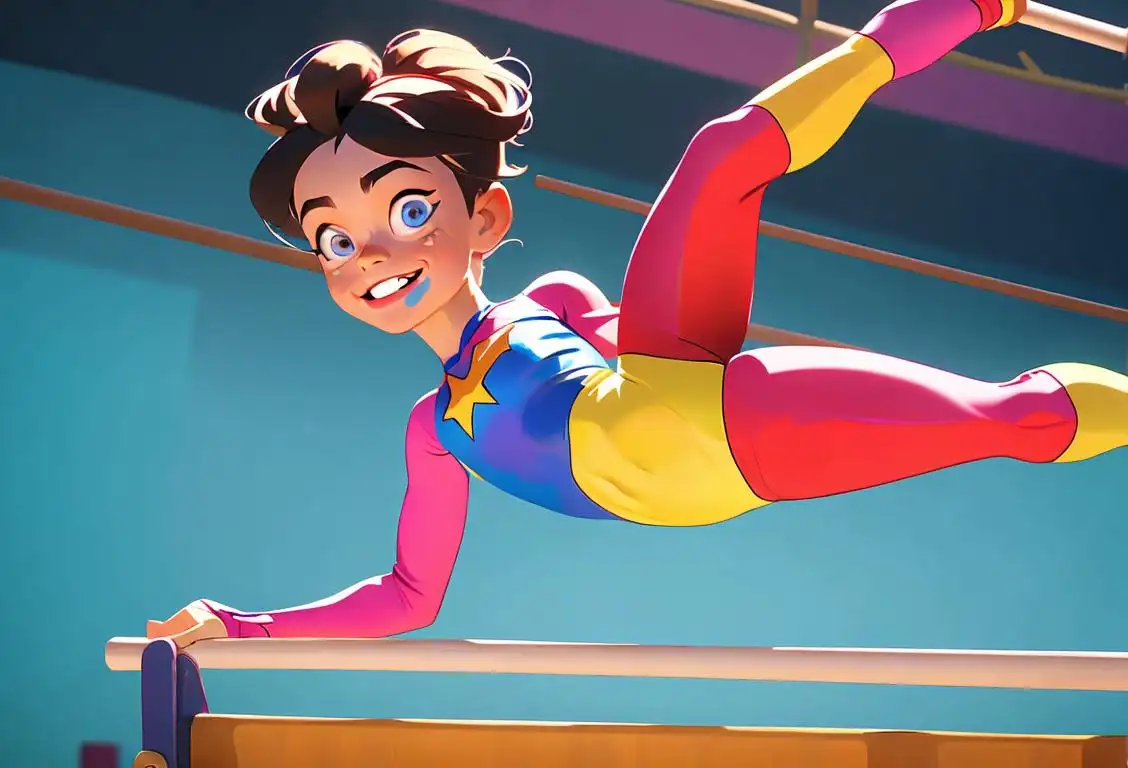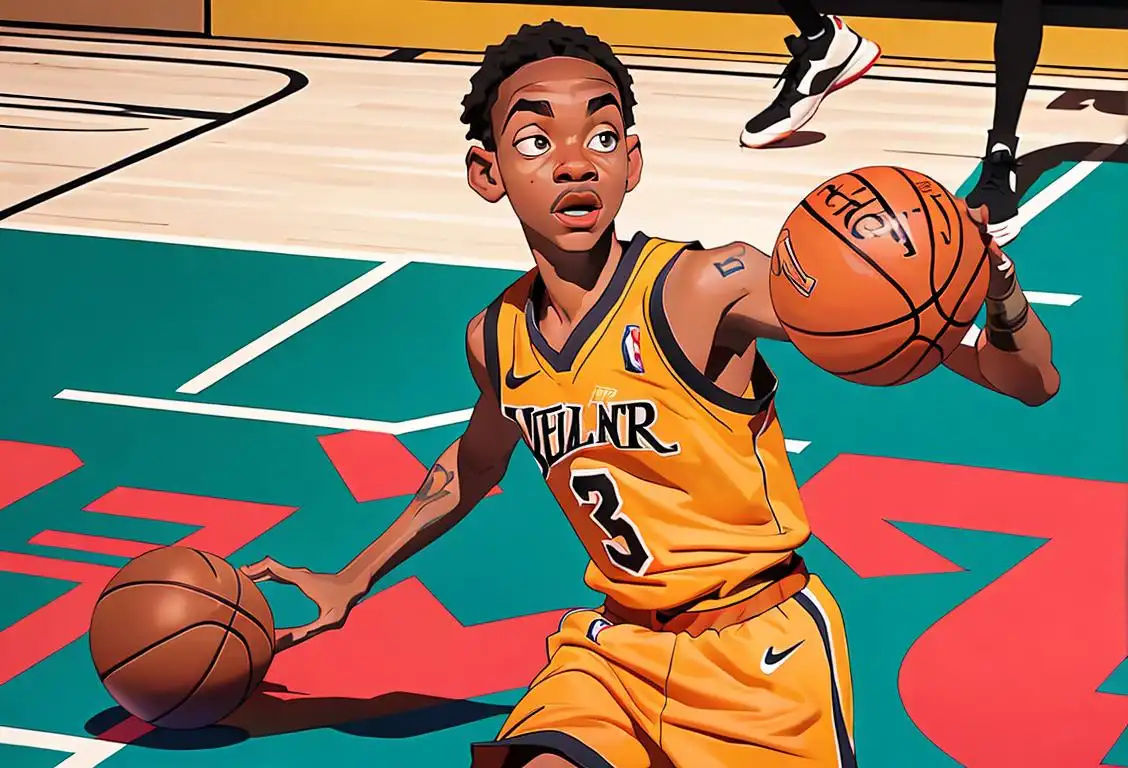National Nba Jersey Day
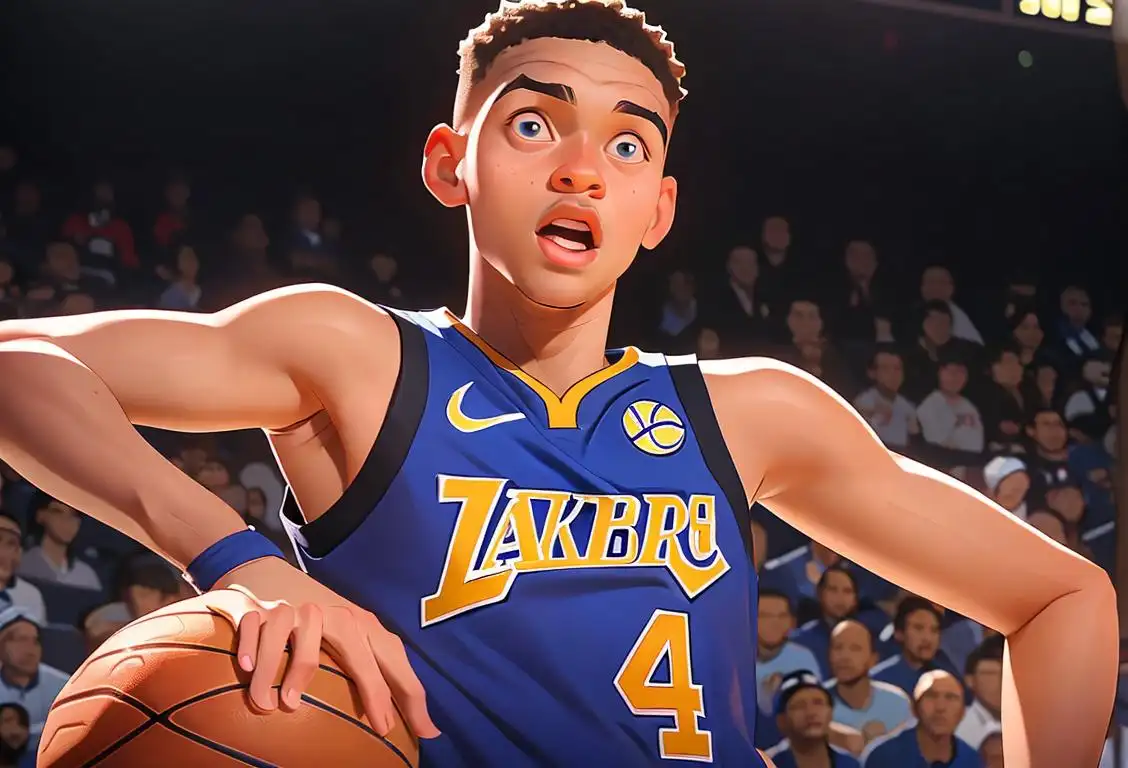
Hey there, basketball fans! Get ready to throw on your favorite NBA jersey because it's National NBA Jersey Day! This is the perfect time to show off your team spirit and represent your favorite NBA players. Whether you're a die-hard fan or just love the sport, this day is all about celebrating the basketball culture and the iconic jerseys that have become a part of it.
When is Nba Jersey Day?
It's national nba jersey day on the 22nd December.
The History of NBA Jerseys
The history of NBA jerseys dates back to the early days of the National Basketball Association. When the league was founded in 1946, players wore simple and straightforward jerseys without any flashy designs or team logos. But as the sport gained popularity and teams started to establish their identities, the jerseys began to evolve.
It wasn't until the late 1960s that the NBA introduced team names and logos on the front of the jerseys. This added a new level of excitement and pride for fans, who could now proudly display their team allegiances. Over the years, the designs became more vibrant and creative, reflecting the unique personalities and cultures of each team.
With the rise of superstar players like Michael Jordan, Magic Johnson, and Larry Bird in the 1980s, NBA jerseys became iconic symbols of basketball greatness. Fans flocked to stores to get their hands on replica jerseys, wanting to emulate their favorite players both on and off the court.
Today, NBA jerseys have reached a whole new level of popularity. They have become fashion statements, with fans and celebrities alike sporting them as casual wear. From classic retro designs to modern sleek styles, NBA jerseys have become a must-have for basketball fans everywhere.
Celebrating National NBA Jersey Day
On National NBA Jersey Day, grab your favorite jersey and proudly wear it to show your love for the game. Whether you're headed to a game or simply hanging out with friends, wearing your team's colors will definitely spark some basketball conversations.
For an extra touch of fun, organize a jersey day at your workplace or school. Encourage everyone to wear their favorite NBA jerseys and see which team gets the most representation. You can even have a friendly competition to see who can come up with the most creative outfit inspired by their team's jersey.
Don't forget to snap a photo and share it on social media with the hashtag #NationalNBAJerseyDay. It's a great way to connect with other fans and celebrate the sport together.
History behind the term 'Nba Jersey'
1946
The Beginnings of the NBA
In 1946, the National Basketball Association (NBA) was founded as the Basketball Association of America (BAA). This new professional basketball league aimed to provide high-quality entertainment to basketball fans across the United States.
1946
The Formation
In 1946, the National Basketball Association (NBA) was founded as the Basketball Association of America (BAA). The league consisted of eleven teams and aimed to bring professional basketball to a larger audience. However, during this time, there were no specific jerseys or uniforms designated for NBA players, and they wore their own attire during games.
1946
The birth of the National Basketball Association
In 1946, the National Basketball Association (NBA) was founded as the Basketball Association of America (BAA). The BAA consisted of 11 teams and aimed to create a professional basketball league in the United States. This marked the official start of organized professional basketball in the country.
1946
Birth of the NBA
In 1946, the National Basketball Association (NBA) was founded as the Basketball Association of America (BAA). At this time, players wore simple, loose-fitting jerseys that did not have any identifiable team logos or player names. The jerseys were made from simple fabrics and were not a significant part of the players' identities.
1946
The Birth of the National Basketball Association (NBA)
In 1946, the National Basketball Association (NBA) was founded as the Basketball Association of America (BAA). It initially consisted of 11 teams, including iconic franchises like the Boston Celtics and the New York Knicks. However, during this time, teams did not have specific jerseys like we know today.
1946
The Birth of the NBA
The National Basketball Association (NBA) is established on June 6, 1946. A professional basketball league, the NBA quickly becomes popular among basketball enthusiasts and begins to shape the future of the sport.
1946
The Birth of the NBA
In 1946, the National Basketball Association (NBA) was founded as the Basketball Association of America (BAA). The BAA consisted of 11 teams and aimed to elevate professional basketball to a more organized and competitive level. However, during this time, players did not wear specific jerseys with team names or numbers.
1946
The Birth of the National Basketball Association (NBA)
In 1946, the Basketball Association of America (BAA) was founded, which eventually merged with the National Basketball League (NBL) in 1949 to form the NBA. The BAA and NBL were the precursors to the NBA as we know it today. At this time, players wore simple and plain jerseys without any prominent branding or designs.
1967
Adoption of Team Logos
In 1967, the NBA introduced team logos on jerseys for the first time. This was a significant step in establishing the identity of both the teams and the players. The addition of team logos allowed fans to quickly distinguish between teams and players, increasing the level of engagement and connection with the game.
1970
The Rise of the NBA Jersey
The NBA introduces its first official jersey in 1970. This marked the transition from simple cotton t-shirts to more professional-looking attire. The jersey design featured the team name, player number, and player name on the back. This step was crucial in establishing the NBA jersey as an iconic symbol of the league and its players.
1947
Introduction of Team Jerseys
In 1947, the BAA introduced team jerseys as a way to differentiate the players and promote team identity. These jerseys were initially made from a wool blend and featured the team's name or city on the front. They had a simple design and were primarily meant to distinguish players on the court.
1947
The Introduction of Team Logos
In 1947, the BAA introduced team logos on their jerseys for the first time. This allowed teams to develop a unique visual identity and foster fan loyalty. However, the jerseys still did not have player numbers or names on them.
1947
Introducing team uniforms
In 1947, the BAA introduced team uniforms for the first time. These uniforms not only helped differentiate players from different teams but also provided a visual identity for each franchise. At the time, these uniforms were simple and did not feature any player names or numbers.
1969
The Introduction of Player Names and Numbers
In 1969, the NBA introduced player names on the back of jerseys, along with numbers. This change allowed fans to easily identify and connect with their favorite players. It also opened up opportunities for merchandise sales, as fans now had the option to purchase jerseys with their favorite player's name and number.
1949
Official Team Jerseys
In 1949, after a merger between the BAA and the National Basketball League (NBL), the NBA we know today was formed. With this merger came the introduction of official team jerseys for the players. These jerseys aimed to represent and differentiate each team, featuring unique colors, logos, and player numbers.
1947
Jersey Numbers Introduced
In 1947, the BAA introduced jersey numbers for players as a way to identify them on the court. These numbers were displayed on the front and back of the jerseys. The introduction of jersey numbers helped fans and officials easily recognize and differentiate players during games.
1970
Distinctive Designs
By the 1970s, the NBA started experimenting with more distinctive jersey designs. The introduction of bold colors, patterns, and typography on the jerseys added an element of style to the game. Jerseys became iconic, representing both the teams and the players who wore them.
1971
Player Names on Jerseys
The year 1971 brought another major change to NBA jerseys - the addition of player names on the back. This innovation allowed fans to easily identify and connect with their favorite players. Moreover, it created a sense of individuality and recognition for the players in the league.
1969
The NBA-ABA Merger and the Birth of the Modern NBA Jersey
In 1969, the NBA merged with its rival league, the American Basketball Association (ABA). This merger brought together the best players from both leagues and led to the birth of the modern NBA jersey. The newly formed NBA required teams to have player names and numbers on their jerseys, making it easier for fans to identify individual players.
1950
Team Names Added to Jerseys
By 1950, the BAA had merged with the rival National Basketball League (NBL) to form the NBA we know today. It was during this time that team names were added to the jerseys. This change allowed fans to better identify with their favorite teams and players.
1970
The Evolution of NBA Jersey Designs
During the 1970s, NBA jerseys started to feature more intricate designs and team branding. The jerseys began to include team colors, logos, and unique patterns, making them more visually appealing. This shift marked the beginning of the NBA jersey as a representation of team identity and fan loyalty.
1970
Adoption of Player Numbers
During the 1970-1971 season, the NBA implemented the use of player numbers on jerseys. This change allowed fans to easily identify their favorite players and added a personal touch to the jerseys. Players were assigned numbers based on their position on the team, with guards typically having lower numbers and centers having higher ones.
1986
The Revolution of NBA Jersey Design
In 1986, the NBA partnered with Nike to revolutionize the design and manufacturing of NBA jerseys. The introduction of new technologies such as sublimation printing allowed for intricate patterns, bold colors, and unique designs. This collaboration not only enhanced the visual appeal of NBA jerseys but also solidified Nike's influence in the world of sports apparel.
1949
Merger of BAA and NBL
In 1949, the BAA merged with the National Basketball League (NBL) to form the National Basketball Association (NBA) that we know today. This merger brought together talented players and teams from both leagues, expanding the reach and popularity of professional basketball in the United States.
1997
The Introduction of NBA Throwback Jerseys
In 1997, the NBA introduced throwback jerseys, which were designed to resemble the uniforms worn by past NBA teams. These jerseys became immensely popular among fans and players alike, with many players choosing to wear throwback jerseys during games. The throwback trend added a sense of nostalgia and brought attention to the rich history of the NBA.
2006
The Advent of NBA Swingman Jerseys
In 2006, the NBA introduced the Swingman jersey, which became immensely popular among fans. The Swingman jerseys were replicas of the jerseys worn by NBA players but made affordable for fans. This enabled fans to show support for their favorite players and teams by wearing authentic-looking jerseys without breaking the bank.
1970
The Adoption of the Classic Sleeveless Design
In 1970, the NBA introduced the iconic sleeveless design for their jerseys. This change allowed players to have unrestricted arm movement, enhancing their performance on the court. The sleeveless jerseys quickly became a hallmark of the NBA and a symbol of basketball culture.
1986
NBA Outfits by Nike
In 1986, Nike became the official outfitter of the NBA, bringing a shift in the design and production of NBA jerseys. Nike's involvement elevated the style and quality of the jerseys, introducing advanced materials and innovative designs. This partnership continues to influence the iconic look and feel of NBA jerseys to this day.
1986
Classic Throwback Jerseys
In 1986, the NBA introduced Classic Throwback Jerseys. These jerseys paid homage to the league's rich history by recreating iconic designs from the past. Fans embraced the nostalgia, and the trend of wearing retro jerseys became popular among NBA enthusiasts, both on and off the court.
1961
Introduction of player names on jerseys
In 1961, the NBA became the first major professional sports league to introduce player names on the back of jerseys. This change allowed fans to easily identify and connect with their favorite players on the court. The inclusion of player names further enhanced the fan experience and contributed to the growing popularity of the sport.
1968
Player Names Introduced
In 1968, player names started appearing on the back of NBA jerseys. This addition allowed fans to easily recognize and connect with individual players. It also helped popularize famous players and their jerseys, further enhancing the marketing and fan experience.
1986
Introduction of Logo and Sponsorship
In 1986, the NBA introduced the NBA logo patch on the front of team jerseys. This logo, known as the Jerry West silhouette, became iconic and synonymous with the league. Additionally, sponsorship logos from companies started to appear on NBA jerseys, marking the beginning of commercial partnerships between teams and businesses.
1997
Reebok Takes Over
In 1997, the NBA entered into an exclusive apparel partnership with Reebok. This marked a significant milestone in NBA jersey history as Reebok became the official provider of jerseys and apparel for all NBA teams. The collaboration gave rise to new jersey designs, incorporating modern technology and materials for enhanced performance.
1980s
Rise of Jersey Merchandising
During the 1980s, NBA jerseys started gaining popularity as merchandise. The vibrant team colors, player names, and numbers attracted fans who wanted to show their support both on and off the court. The sale of NBA jerseys became a significant source of revenue for the league and a symbol of fandom for basketball enthusiasts.
2017
The Era of NBA Statement Jerseys
In 2017, the NBA unveiled the Statement jerseys as part of Nike's innovative uniform system. This collection featured bold and unique designs that allowed teams to showcase their individuality. The Statement jerseys became highly sought-after by fans due to their limited availability and distinctive aesthetic appeal.
2006
The Arrival of NBA Revolution 30 Jerseys
In 2006, the NBA introduced the Revolution 30 jerseys, which featured innovative technology to enhance player performance. These jerseys were made of lightweight and moisture-wicking materials, allowing players to stay cooler and more comfortable during games. The Revolution 30 jerseys also featured improved fit and durability, making them a preferred choice among NBA players.
1970
Addition of player numbers
In 1970, the NBA introduced player numbers on jerseys, making it even easier for fans to identify and recognize their beloved basketball stars. Each player was assigned a unique number, which became an essential element of their identity in the league. Fans began associating certain numbers with iconic players, further cementing the jersey's significance in basketball culture.
1997
Alternative Jerseys
In 1997, the NBA introduced alternative jerseys, providing teams with additional design options beyond their traditional home and away uniforms. This move allowed teams to showcase creativity and connect with fans in new and exciting ways. Alternative jerseys became popular among fans and collectors, often featuring unique color schemes and designs.
1997
The Introduction of Alternate Jerseys
In 1997, the NBA introduced alternate jerseys, allowing teams to have additional uniform options. This gave teams the opportunity to showcase different designs, colors, and themes, providing fans with a refreshing variety of jerseys to enjoy. Alternate jerseys became popular among fans and collectors alike.
1997
Modernizing the Jersey Material
In 1997, the NBA switched from traditional wool jerseys to modern synthetic fabric jerseys. The move to technologically advanced materials, such as polyester mesh, improved the players' performance by providing better breathability and moisture-wicking capabilities. The new jerseys also became more comfortable for players to wear during games.
2006
Adidas Era
In 2006, the NBA formed a new partnership with Adidas, which took over as the league's official uniform provider. Adidas brought innovation to jersey design by introducing new fabrics, advanced moisture-wicking technologies, and improved fit. This era saw the integration of fashion and function, with jerseys becoming more tailored and stylish.
2006
The Introduction of the NBA Revolution 30 Jerseys
In 2006, the NBA launched the Revolution 30 jerseys, which featured innovative technology aimed at enhancing players' performance. These jerseys were 30% lighter than their predecessors and had moisture-wicking properties to keep players dry and comfortable. The Revolution 30 jerseys also incorporated environmentally friendly materials, reflecting the NBA's commitment to sustainability.
2006
Revolutionary NBA Revolution 30
In 2006, the NBA introduced the revolutionary NBA Revolution 30 jersey. These jerseys featured a significant innovation - they were 30% lighter and more breathable than previous designs, enhancing the comfort and performance of the players. This technological advancement marked a new era in NBA jerseys, ensuring players could perform at their best.
2010
The Introduction of NBA Sleeved Jerseys
In 2010, the NBA introduced sleeved jerseys, a departure from the traditional tank-top style jerseys. The sleeved jerseys were met with mixed reactions from fans and players, as they deviated from the traditional look of NBA uniforms. While some players embraced the change, others expressed their preference for the classic jerseys.
1986
Adoption of official jersey supplier
In 1986, the NBA signed an exclusive contract with sportswear manufacturer Nike to become the league's official jersey supplier. This partnership marked a significant milestone in the league's history and solidified the role of jerseys as a prominent representation of NBA teams and players. Nike's innovative designs and global reach have contributed to the evolution and popularity of NBA jerseys.
1997
First NBA Store
In 1997, the NBA opened its first official store in New York City. This store provided fans with a one-stop-shop for all things NBA, including jerseys. It became a hub for basketball fans to get their hands on authentic NBA jerseys and collectibles associated with their favorite teams and players.
2006
Introduction of Throwback Jerseys
In 2006, the NBA started the trend of wearing throwback jerseys during certain games. Throwback jerseys are replica jerseys that resemble the designs and styles of past eras. This initiative aimed to celebrate the league's rich history and allow fans to connect with the nostalgia of their favorite teams and players.
2006
NBA Revolutionizes Jersey Design
In 2006, the NBA introduced a new line of jerseys called the 'Revolution 30' jerseys. These jerseys incorporated new technologies and materials to enhance player performance, comfort, and durability. The 'Revolution 30' jerseys also featured a more streamlined and modern design, reflecting the evolving fashion trends in the sports world.
2017
Nike's Turn
In 2017, Nike replaced Adidas as the official NBA uniform provider. Nike introduced the NikeConnect feature to jerseys, which allowed fans to access exclusive content and experiences by scanning a chip embedded in the jersey. The partnership with Nike further solidified the intersection of sports, fashion, and technology in NBA jersey culture.
2015
The NBA's Global Game: International Edition Jerseys
As the NBA's popularity grew globally, the league introduced international edition jerseys in 2015. These jerseys featured unique designs inspired by different countries, celebrating the NBA's diverse fanbase around the world. The international edition jerseys became highly sought after, appealing to fans both within and outside the United States.
2020
Social Justice Messages
In 2020, in response to the social justice movement and the Black Lives Matter movement, the NBA made history by allowing players to replace their names on the backs of jerseys with social justice messages. This powerful statement gave players an opportunity to use their platform to raise awareness and promote positive change in society.
2020
The Nike NBA Jerseys Era
In 2020, Nike became the official supplier of NBA jerseys, taking over from Adidas. Nike introduced new uniform designs, including the Association Edition (home), Icon Edition (away), Statement Edition (alternate), and City Edition jerseys. These jerseys feature unique patterns and designs that pay homage to local culture, landmarks, and fan traditions.
2021
Innovations and Personalization
In recent years, the NBA has continued to innovate with jersey designs and customization options. From special edition jerseys honoring cultural events or causes to customizable jerseys for fans, the NBA jersey has become a fashion statement and a symbol of individual expression. Today, NBA jerseys have become highly sought-after collector's items for basketball fans worldwide.
Present
Evolution of the NBA Jersey Culture
Today, NBA jerseys have become an integral part of basketball culture. Fans proudly wear jerseys of their favorite players, both current superstars and iconic legends. The NBA continues to innovate and collaborate with top fashion brands, resulting in unique and stylish jersey designs that transcend the world of sports. NBA jerseys have not only become a symbol of team pride but also a fashion statement and a collector's item.
Present
Evolution and Fan Engagement
In the present day, NBA jerseys continue to evolve and play a vital role in fan engagement. They have become a significant part of pop culture, often worn as casual streetwear or fashion statements. With ongoing collaborations, special edition jerseys, and annual updates, NBA jerseys have transcended the basketball court, leaving a lasting cultural impact.
Did you know?
Did you know that Michael Jordan's iconic number 23 Chicago Bulls jersey is one of the best-selling NBA jerseys of all time? It's no wonder, considering his immense talent and the impact he had on the game of basketball!Tagged
fun sportsFirst identified
22nd December 2020Most mentioned on
22nd December 2020Total mentions
15Other days
Golf Day
Hunting And Fishing Day
Cancer Survivors Day
Fitness Day
Memorial Day
Gymnastics Day
Dance Day
Foundation Day
Jr Smith Day
Left Handers Day
